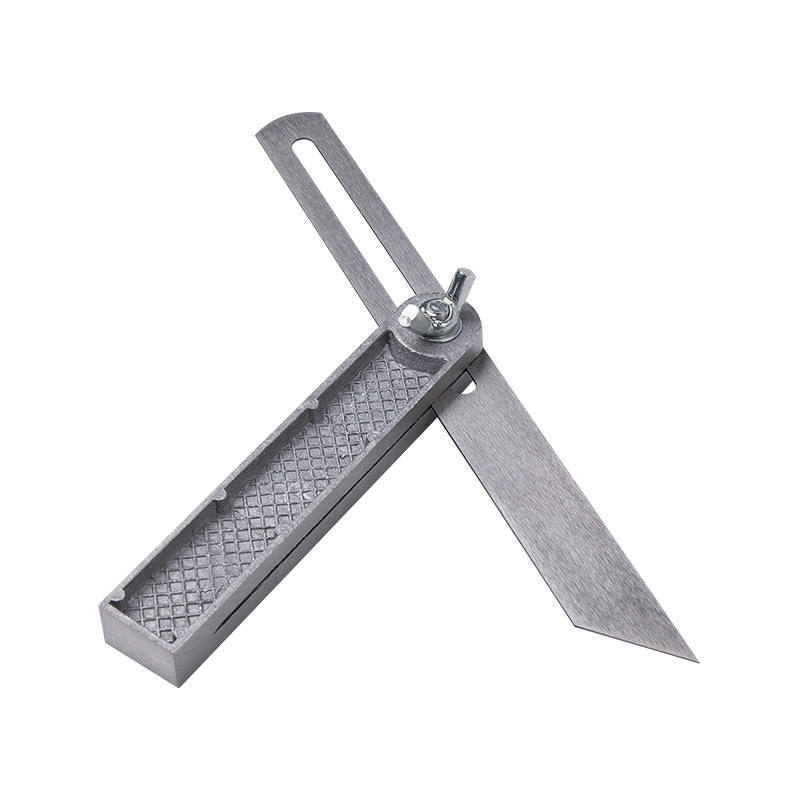Adjustability: Sliding T-bevels feature a blade that can be adjusted smoothly and precisely to any desired angle within its range, typically from 0 to 180 degrees. This adjustability allows professionals in woodworking, metalworking, engineering, and other trades to set exact angles required for specific tasks. For example, in carpentry, adjusting the angle accurately is crucial for creating precise joinery cuts or fitting components together seamlessly. In metalworking, precise angle settings are essential for welding, machining, and assembly operations. This flexibility eliminates the need for multiple fixed-angle bevels or setups, streamlining workflow and reducing setup time.
Versatility: Unlike traditional fixed-angle bevels that are limited to a single angle, sliding T-bevels excel in measuring and transferring both internal and external angles. This versatility is particularly valuable in industries where angles vary widely, such as construction, renovation, and fabrication. Professionals can easily measure angles in corners, irregular shapes, or complex geometries without switching tools. This versatility extends to various materials like wood, metal, plastic, and composites, making the sliding T-bevel a versatile tool across different applications.
Precision: Sliding T-bevels are engineered with mechanisms that allow for fine adjustments and secure locking of angles. This precision is critical in professions where accuracy is paramount. For instance, in woodworking, precise angle measurements ensure tight-fitting joints and accurate cuts. In metalworking, precise angles are necessary for welding preparation, machining setups, and assembly alignment. The ability to lock an angle securely prevents slippage during use, maintaining consistency and reliability in every application.
Flexibility: Professionals value the sliding T-bevel for its adaptability to diverse projects and materials. Whether working on furniture, cabinetry, structural frameworks, or machinery, the tool accommodates a wide range of angles and tasks with ease. This flexibility extends to construction and maintenance tasks where angles must be precisely measured for fitting, aligning, or modifying components. The tool's flexibility reduces the need for multiple tools or setups, enhancing efficiency and versatility in various trade applications.
Ease of Use: Despite its adjustable nature, sliding T-bevels are designed for straightforward operation. The locking mechanisms are typically intuitive, allowing users to set, adjust, and lock angles quickly and securely. This ease of use is essential in fast-paced work environments where time efficiency and accuracy are crucial. The ergonomic design of handles and controls enhances comfort during prolonged use, reducing fatigue and improving productivity on the job site or in the workshop.
Functionality: Beyond angle measurement, sliding T-bevels often incorporate features that enhance their utility in practical applications. Some models may include additional scale markings for precise angle readings, ergonomic handles for comfort during prolonged use, or compatibility with accessories such as marking gauges or rulers for layout work. These functional enhancements make the sliding T-bevel a versatile and indispensable tool for professionals seeking efficiency, accuracy, and reliability in their daily tasks.
Cast aluminium handle sliding T-bevel




 English
English Español
Español
















